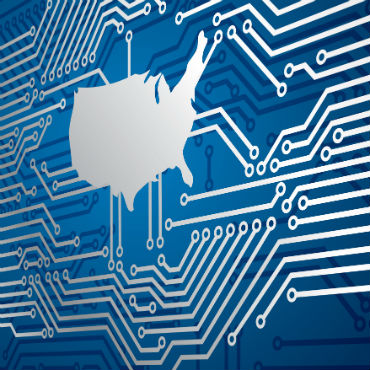DHS plans to step up cyber agreements with private companies

DHS is looking at increasing the use of proactive agreements with critical infrastructure entities to prevent and mitigate cyberattacks.

The Department of Homeland Security is looking to step up its engagement with private sector entities in the wake of the May 2017 WannaCry attack.
During a Dec. 19 briefing attributing the attacks to North Korea, Jeanette Manfra, assistant secretary for the office of cybersecurity and communications at DHS, signaled that the department was ready to enter a new phase of cybersecurity cooperation with companies that provide essential services to the U.S. economy.
"To ensure adequate security in the private sector, DHS plans to move beyond only offering voluntary assistance to more proactively becoming the world leader in cyber risk analysis and intervening directly with companies when necessary," said Manfra.
Part of that push will include increased outreach and cooperation with critical infrastructure companies identified under Section 9 of Executive Order 13636, issued under the Obama administration.
According to a DHS cybersecurity official with direct knowledge of the developing policy, the department is looking to increase the use of proactive memorandums of agreement with Section 9 entities in advance of a specific incident.
Voluntary agreements would pre-clear the department to provide incident response services, monitor networks when threat indicators pop up, block malicious traffic and deploy resources to assist those entities in the event of a cyberattack. The official requested anonymity in order to speak candidly.
While the nature of these agreements between DHS and private companies can vary by sector, the official said that in the past the department has taken a passive role, waiting for companies to reach out and ask for help before moving in to provide assistance.
"It's about going from this voluntary basis where we wait for someone to call in, it has to be the right person, they have to be given this memorandum of agreement, we involve outside lawyers, it takes a long time," the official said. "If you have [an incident] that requires a 24-hour response, that doesn't make sense."
Section 9 entities are defined as companies that provide services so vital to the functioning of the economy that a successful cyberattack could "reasonably result in catastrophic regional or national effects on public health, safety, economic security or national security."
In May 2017, President Donald Trump signed Executive Order 13800 directing DHS to "identify authorities and capabilities that agencies could employ to support the cybersecurity efforts of critical infrastructure entities identified pursuant to section 9 of Executive Order 13636" and "engage section 9 entities and solicit input as appropriate to evaluate whether and how the authorities and capabilities… might be employed to support cybersecurity risk management efforts."
Manfra alluded to the department's focus on critical infrastructure in her comments at the WannaCry briefing, saying DHS would focus on companies that provide "critical services and function such as electricity, a stable financial system and dependable communications, many of the things that enable our modern way of life."
DHS identifies 16 critical infrastructure sectors, including power companies, large financial services firms, Internet Service Providers, transportation systems, the chemical sector, water and wastewater systems and others. Per the 2013 executive order, the list of Section 9 companies is updated every year and sent to the president.
The official said the department is not claiming any new authorities to enact this plan, but rather relying on existing authorities to enter into voluntary cooperative cybersecurity agreements with private sector companies. The official also said that this cooperation between the government and private sector already exists at lower frequencies, but DHS is seeking to ramp up that activity in the future.
Information sharing has become a cornerstone of the federal government’s cybersecurity strategy with the private sector in recent years. DHS offers voluntary programs for companies to exchange threat information, including the Automated Indicator Sharing program and the Cyber Information Sharing and Collaboration Program. These exist independent of any individual agreement between the department and an entity.
Ari Schwartz, former senior director for cybersecurity on the National Security Council under the Obama administration, told FCW that memorandums of agreement are often proposed after a specific cyber event, such as WannaCry, becomes known. These agreements typically include language that limits the government’s access while spelling out privacy protections for customers. However, he said it was not uncommon or unusual for the government to seek out these agreements in advance of an event, particularly with critical infrastructure companies.
"My understanding is that…there’s a timeframe and an agreement that they're only going to be looking at systems that are directly tied to the threat, and only keeping it for that purpose," said Schwartz. "The legal paperwork is about being able to look through, making sure that if [the government] sees customer data, they’re not running afoul of privacy laws."
Schwartz said that DHS has discussed ways to improve private sector engagement for years, so in some sense Manfra was simply reinforcing that same position with stronger language. But he also said "to say they’re going to do it more actively and WannaCry is an example of how they've done it…I think is a change in posture."


